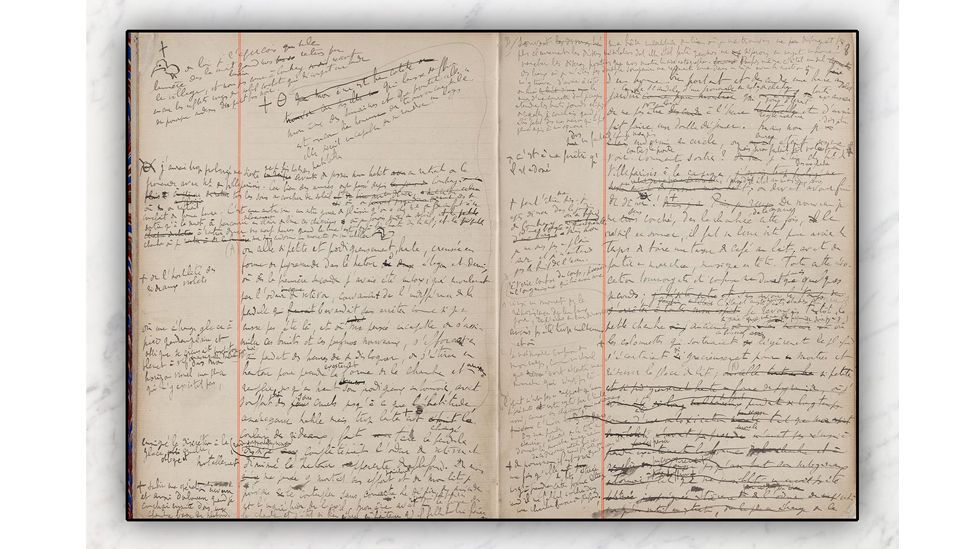W
Writers who find themselves mired in procrastination would do well to take a page from Marcel Proust’s most famous book. Specifically, a page from In Search of Lost Time in manuscript form. Nothing more powerfully illustrates the truth of that creative-writing-class maxim, ‘writing is rewriting’, than the liberally crossed-out, lavishly annotated, occasionally doodled-upon notebooks in which Proust composed his seminal, seven-volume text.
More like this:
– The greatest summer novels ever written
– The cult books that lost their cool
– The best novels you’ve never heard of
While their faded ink and age-dappled paper evoke physical fragility, what they showcase is a robust, almost aggressive determination. This is the heavy lifting of literary endeavour made manifest; there is no preciousness here, nothing is sacred. However much Proust doubted himself – and he doubted his chosen art form, too – he pressed on with a monumental task that would occupy him for the rest of his life. As for that iconic morsel of memory-laden cake, the madeleine, it started out as a slice of toast and a cup of tea.





